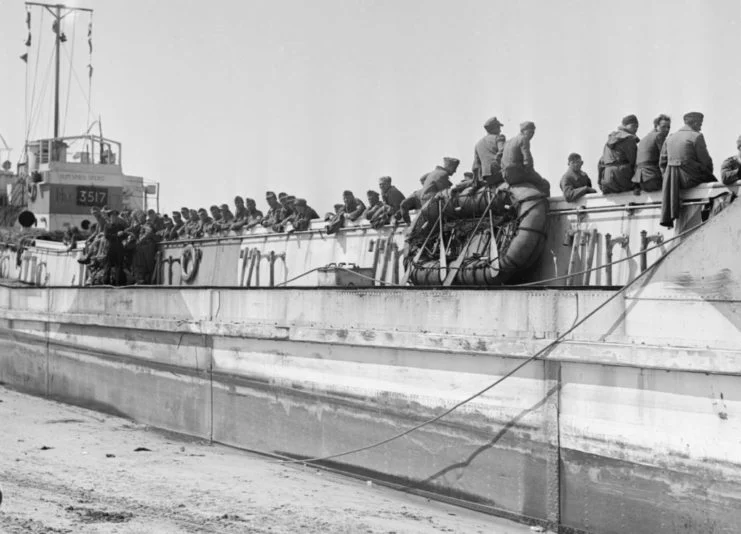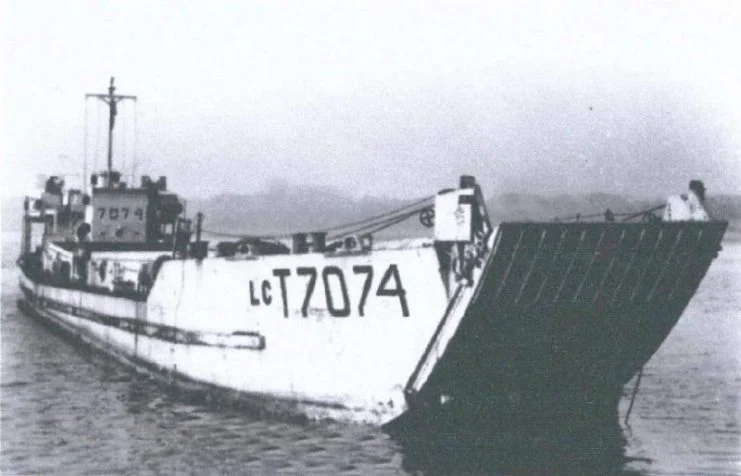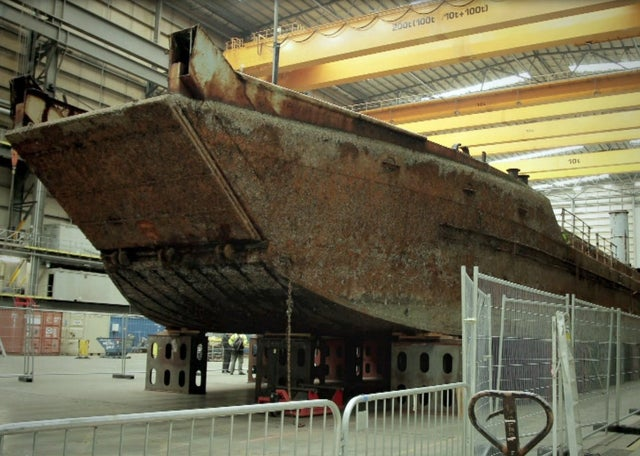LCT 7074 is the last remaining landing craft of its kind. It participated in the D-Day invasion on June 6, 1944, along with 800 other landing craft and 7,000 other ships of all kinds.
It was the largest amphibious invasion in military history. Craft like LCT 7074 were responsible for delivering troops and equipment to the shore.
LCT (which stands for Landing Craft Tank) vessels could carry ten tanks or other heavily armored vehicles. 7074 is the last one left that is known to have participated in the invasion.

The British authorities have added it to the National Historic Fleet, assigning it certificate number 713.
The National Museum of the Royal Navy and the D-Day Story are working to restore LCT 7074 so that it can be displayed for the public in its original 1944 configuration.
The only other major warship on public display in the UK is the HMS Belfast – a ten thousand ton cruiser which supplied artillery support from miles off shore.
The preservation of the LCT 7074 is intended to honor the stories of the thousands of men and women who worked to design, build and maintain the LCTs and the young men (most from the Royal Naval Volunteer Reserve) who served on them.
This particular LCT was used as a nightclub in Liverpool after the war. It then went unused for decades while falling into disrepair.
According to Portsmouth City Council member Steve Pitt, the conservation work on the vessel has gone better than expected.
He also commented that the work on the D-Day Story location where the vessel will be displayed is has progressed as planned, although the effects of COVID-19 may delay work in the future.
He said that, assuming things stay on track, LCT 7074 will be in place on the seafront by early May and ready for visitors in the summer.
While there are other LCTs around, they have been converted to other uses. This is the only one which was in good enough shape to restore to the way it was at the time of the D-Day invasions.
The landing craft were created at the urging of Winston Churchill. He was smarting from the defeat the army took from the Germans at Dunkirk.
The army had been forced to leave their artillery and armored vehicles behind because the Royal Navy had no ships which could carry them. As such, the British were easily defeated in humiliating fashion and Churchill vowed that it would not happen again.
The LCTs were designed only to be shipped in components on larger ships then assembled before the invasion, loaded and sent to shore.

They were loud, hot, hard to maneuver and often presented an easy target to the enemy. In spite of these shortcomings, the LCTs proved invaluable and irreplaceable at delivering troops and equipment to locations which would otherwise be unreachable.
Most of the LCTs were worked until they fell apart. This is the main reason why there are so few left.
LCT 7074 has survived partly because it was back home for a refit when the war ended. She was decommissioned in 1945 and then used as club after the war.
The ship sank in dock when a previous conservation attempt went awry. The organization behind that attempt went bankrupt and so the ship remained underwater for years.
The Last Victor Bomber Can Be Yours for Free -YES FREE
Now that it has been raised and the restoration is done, work is underway on the canopy which will protect the vessel while it is on display.
